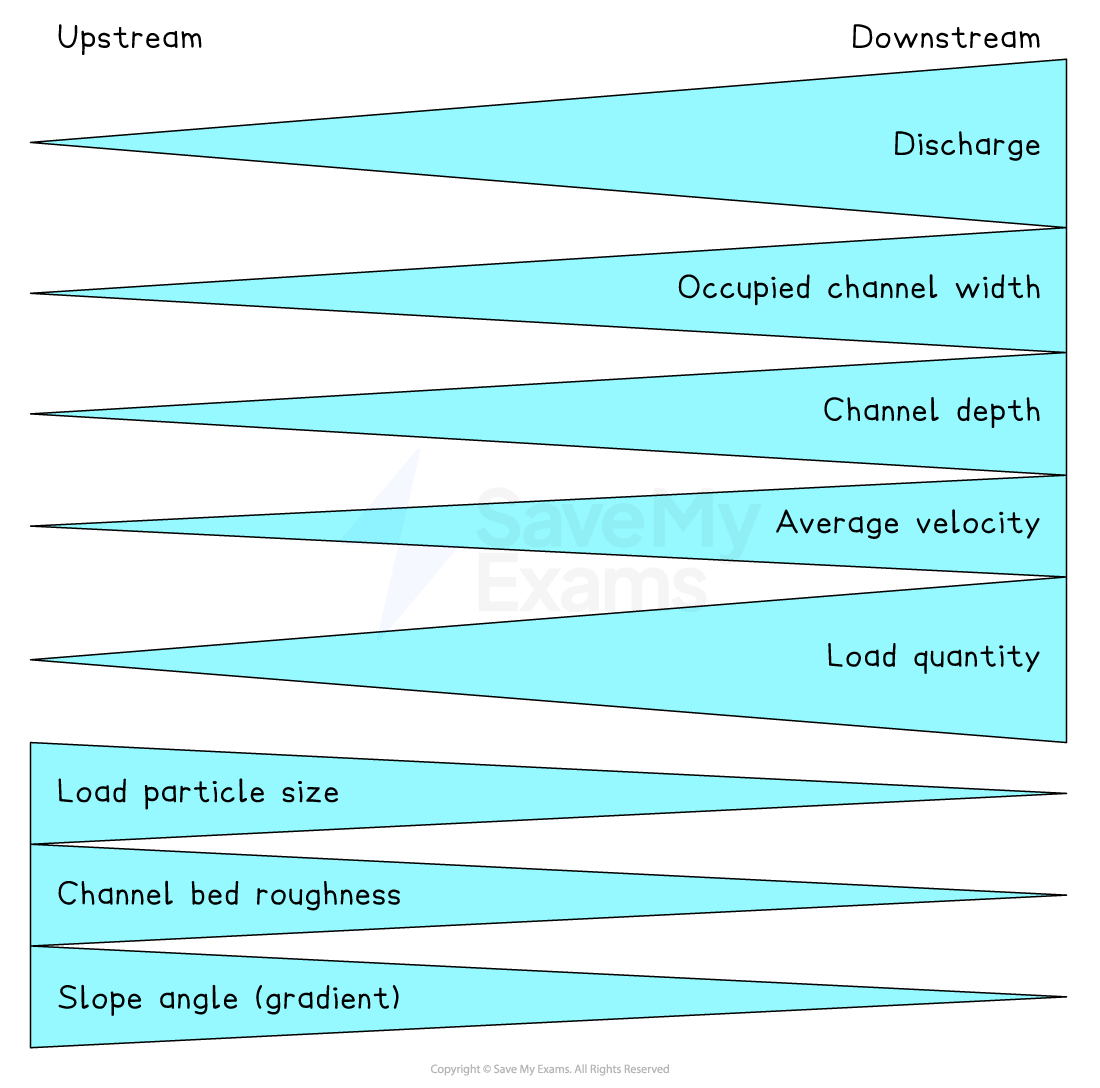Fieldwork Questions (AQA GCSE Geography): Revision Note
Exam code: 8035
Aims and hypothesis
Fieldwork is based around an enquiry into a 'real life' issue
This is linked to the content in the specification and then related to a place-specific context
All fieldwork begins with the aims and hypothesis
The aim explains what the enquiry is attempting to achieve
An investigation into changes in beach profiles along Mappleton Beach
An investigation into the impact of building a wind farm in rural Lincolnshire
The hypothesis needs to be clear, directional and measurable; it is a statement which can be tested
River discharge increases with distance from the source of the River Dove
Environmental quality increases with distance from the new road in Swanland, East Yorkshire
Aims and hypotheses may be based on what is already known about the topic. For example, Bradshaw's model of rivers
Underpinning geographical theory
When completing fieldwork, there should be a clear link between the investigation and established theories, models or concepts
The fieldwork does not have to be based on the theory or model but the theories and concepts must be identifiable
This should be something that you have already studied
A concept such as sustainability for example, the sustainability of a transport strategy in an urban area
A theory or model – see Bradshaw's model below
In a river investigation it would be appropriate to use Bradshaw's model
The model identifies the changes in a river from upstream to downstream
It can be used to formulate a hypothesis, which is then tested by the fieldwork investigation

Primary and secondary data
The data collected by a student during their fieldwork is classified as primary data.
Examples of primary data can include:
Questionnaire data
River data: width, depth, etc.
Video/audio recordings
Photographs
Interview information
Data collected by someone else but used by a student in their enquiry is secondary data
Examples of secondary data can include:
Census results
Weather data
Old photographs
Maps
Newspaper articles
Websites
Strengths and limitations of data
Primary data
Strengths
Primary data is reliable and valid
It is specific to the enquiry
As much data as needed can be collected
The method of the collection is known
It is up to date
Limitations
It is time-consuming to collect
There may be a need for specialist equipment/resources
The sample size needs to be large to be accurate
Secondary data
Strengths
Easy to access the data
Low cost or free
Can be accessed quickly
A large amount of data sources are available
Limitations
It is not specific to the enquiry
No control over the data quality
Data may be biased
Data may be out of date
Health & safety
Any fieldwork will involve consideration of health and safety using a risk assessment
Hazards should be identified
Who is at risk and why?
What measures can we take to reduce the risk?
Potential hazards, risk and management
Weather conditions
Risk
Heavy rainfall can cause flash flooding
Strong sun can lead to sunburn/heatstroke
Management
Check the weather forecast prior to entering the river
Apply sunscreen
Wear a hat
Slippery rocks
Risk
Risk of slipping on rocks causing injury
Management
Wear sturdy, appropriate footwear with good grips on the sole
Waterborne diseases
Risk
Weil's disease can be contracted through contaminated freshwater
Management
Ensure that hands are washed after being in the water
Any open wounds are covered
Anti-bacterial hand wash to be used after contact with water
Working in an unfamiliar place
Risk
Becoming lost
Management
Students should work in groups
Carry a map and have a working mobile phone
Students could wear high-visibility jackets
Misuse of equipment
Risk
Ranging poles and other equipment may cause injury if not used correctly
Management
Ensure that students know how to handle equipment correctly
Traffic
Risk
Risks associated with crossing the road and walking on pavements
Management
Students should wear high-visibility jackets
Remember safe procedures for crossing the road
Contact with strangers
Risk
Questionnaire completion may involve contact with strangers
Can be a risk of offending or annoying people
Management
Plan questions carefully
If someone takes offence or becomes annoyed, apologise and withdraw from the situation
Work in groups
Cliffs
Risk
Risk of rock falls
Risk of cliff collapse
Management
Wear a safety helmet when working below a cliff face
Do not climb the cliff
Do not work at cliff faces in wet/windy weather
Tides
Risk
Becoming trapped by incoming tide
Being swept away by outgoing tide
Management
Check tide tables
Ensure that students are not working alone
Keep checking the beach whilst the tide is coming in or going out
Livestock
Risk
Being attacked by aggressive animals
Management
Do not approach animals
Avoid fields with livestock if possible
Close gates to prevent livestock from escaping

Unlock more, it's free!
Did this page help you?